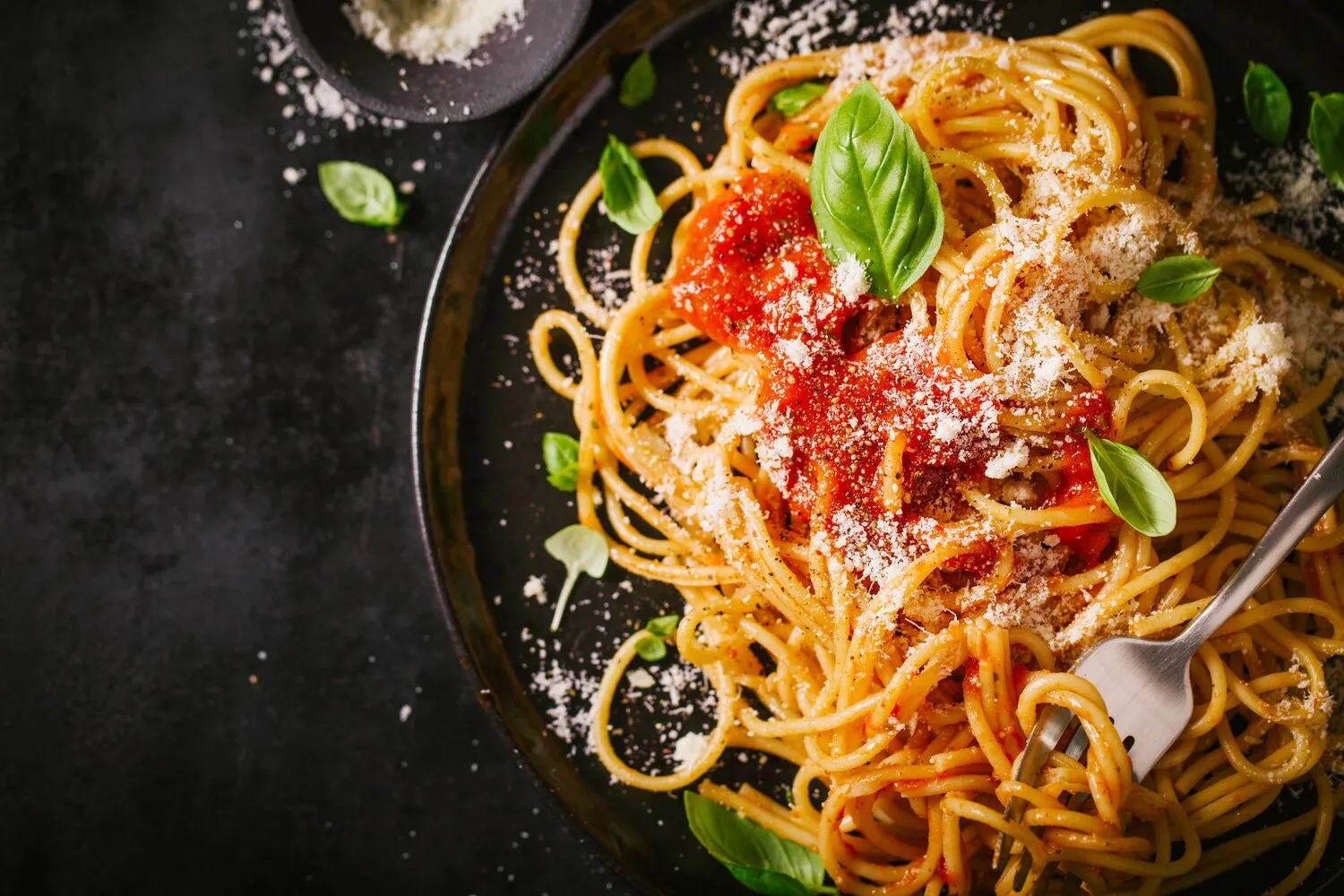
Pasta
Col'Cacchio also offers a selection of pasta dishes. Like the pizzas, they cater to various dietary preferences and feature both classic and unique flavor combinations.
Nutrition Facts
* The % Daily Value (DV) tells you how much a nutrient in a serving of food contributes to a daily diet. 2,000 calories a day is used for general nutrition advice.
Col'Cacchio Florida Road
Pasta's history stretches back millennia. While the exact origins are debated, evidence suggests forms of pasta existed in ancient civilizations, including Etruscan and Roman cultures. Modern pasta evolved significantly in Italy, particularly during the Middle Ages and Renaissance, with variations in shape and preparation developing regionally. The introduction of tomato sauce from the Americas in the 18th and 19th centuries further transformed Italian pasta dishes, solidifying their global popularity.
Pasta is deeply ingrained in Italian culture and identity. It represents family, tradition, and regional pride. Sharing a pasta dish is often a central part of social gatherings and celebrations.
Family Meals
Pasta is a staple in Italian family meals, often served as a first course (primo) during lunch or dinner. The preparation and enjoyment of pasta dishes are often shared experiences within families.
Regional Variations
Each region of Italy boasts its own unique pasta shapes and sauce pairings, reflecting local ingredients and culinary traditions. For example, Bologna is known for Tagliatelle al Ragù (Bolognese), while Liguria is famous for Trofie al Pesto.
Festivals and Celebrations
Pasta dishes often feature prominently in Italian festivals and celebrations, such as Christmas, Easter, and regional food festivals. Certain pasta shapes or preparations may be specifically associated with particular holidays.
Symbol of Simplicity and Abundance
Pasta, though versatile and capable of being elevated to fine dining, is ultimately a dish of simple ingredients, reflecting the abundance of the Italian countryside and the resourcefulness of Italian cooks.
Pasta dishes are incredibly diverse, showcasing a wide spectrum of flavors determined by the sauce, ingredients, and regional variations. Core flavors often include savory, tangy, spicy, creamy, and herbaceous notes.
The base flavor of pasta itself is subtle, providing a canvas for sauces. Tomato-based sauces contribute sweetness and acidity, often balanced with herbs like basil and oregano. Cream-based sauces offer richness and a velvety texture, frequently incorporating cheese (Parmesan, Pecorino Romano) and spices like nutmeg or black pepper. Pesto, made with basil, pine nuts, garlic, Parmesan cheese, and olive oil, provides a vibrant, fresh flavor. Meat sauces, such as Bolognese, deliver savory depth from browned meat, vegetables, and tomatoes. Seafood pasta dishes showcase the delicate flavors of clams, mussels, shrimp, or other seafood, often enhanced with garlic, white wine, and herbs.
Cooking Pasta Al Dente
Cook pasta 'al dente,' meaning 'to the tooth.' It should be firm and slightly resistant when bitten, not mushy or overcooked. This texture allows the pasta to hold its shape and absorb the sauce better.
Salting the Pasta Water
Salt the pasta water generously. This seasons the pasta from the inside out and enhances the overall flavor of the dish. The water should taste like seawater.
Reserving Pasta Water
Before draining the pasta, reserve some of the starchy pasta water. This water can be added to the sauce to help it emulsify and cling to the pasta, creating a creamier and more cohesive dish.
Pairing Pasta Shapes with Sauces
Choose pasta shapes that complement the sauce. Long, thin pasta like spaghetti or linguine are well-suited for lighter sauces, while thicker pasta like penne or rigatoni are better for heartier sauces with chunkier ingredients. Tubular pasta like maccheroni works well with cheesy sauces, creating pockets of flavor.
Finishing Pasta in the Sauce
For the best flavor, finish cooking the pasta in the sauce for a minute or two before serving. This allows the pasta to absorb the sauce and develop a richer, more integrated flavor.
Explore additional Italian dishes and restaurants
Explore ItalianDiscover top dining spots and culinary experiences in Durban.
Explore DurbanLearn more about the food culture, restaurant scene, and culinary heritage of South Africa.
Explore South Africa
